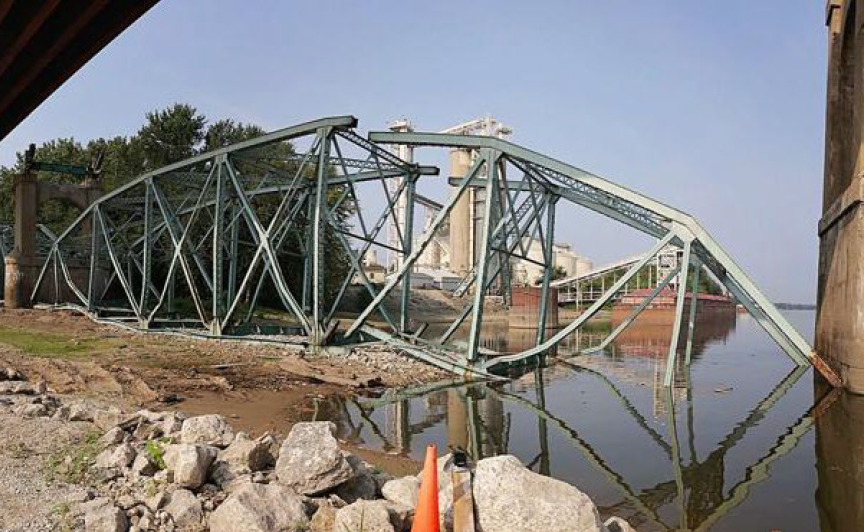Illinois Constructor Corporation (ICC)
Omega III, LLC
Structural Analysis
Demolition Procedure
Spring Valley, IL
2018
Demolition Procedure: IL 89 Bridge over Illinois River
HBM Engineering Group, LLC played a pivotal role in collaborating with Omega III, LLC, a subcontractor for Illinois Constructor Corporation (ICC), providing essential structural engineering services. The focus was on preparing a comprehensive structural assessment report for the upcoming demolition of the IL 89 bridge over the Illinois River at Spring Valley in Bureau County, Illinois. The primary objective was to facilitate the reconstruction of the bridge. This report encapsulates the detailed structural assessment and analysis intended for the planned demolition.
General Bridge Information: Constructed in 1934, the IL 89 bridge boasts 19 spans, incorporating a mix of concrete slabs and steel trusses. The first six approach spans and the last eight approach spans consist of a 7 ½” cast-in-place concrete slab on four (4) W24x62 structural steel beams supported on multi-column bents on concrete piles. The middle five spans are Pennsylvania steel trusses with a 7 ½” cast-in-place concrete slab on four (4) W18x60 structural steel stringers supported on W30x116 floor beams supported by six (6) two-column piers. The truss span wall Piers 1, 2, 3, & 6 are supported by timber piles while Piers 4 & 5 are supported on spread footings on rock. A Type T-1 (modified) railing exists at each edge of the deck. The bridge is 1775’-7 3/8” back-to-back abutments and 23’-4” out-to-out of the deck and has no skew with respect to the roadway alignment. Superstructure and substructure bridge components to be demolished include: railing, deck, beams, piers, and abutment removal within the job limits. A critical aspect of the project involves maintaining ongoing traffic on the existing structure during the construction phase of the new bridge, with the eventual shift of traffic to the newly constructed bridge preceding the commencement of the demolition.
HBM’s Scope:
- Demolition Procedure
- Structural Analysis for
Demolition Stage and Blasting Stage

Structural Analysis:
Longitudinal Analysis:
- Deck and Beams Demolition Stage: Analyzed the as-built structure subjected to demolition equipment loads, such as excavator and loader.
- Truss Span Blasting Stage: Considered the truss structure after deck removal, accounting for weakening/cutting of truss members at critical points for controlled demolition using blast charges.
Transverse Analysis: Analyzed the top slab for the transverse effects of a 56 kip excavator wheel load.
Conclusion: The structural analysis aimed to ensure the adequacy of the existing bridge to withstand demolition equipment and loads. It addressed global longitudinal behavior during deck and beam demolition and local transverse effects from the excavator. The planned weakening and blasting stages were considered to guarantee the safety of the structure throughout the demolition process. This comprehensive analysis laid the foundation for a systematic and secure demolition procedure, aligning with safety standards and project requirements.





